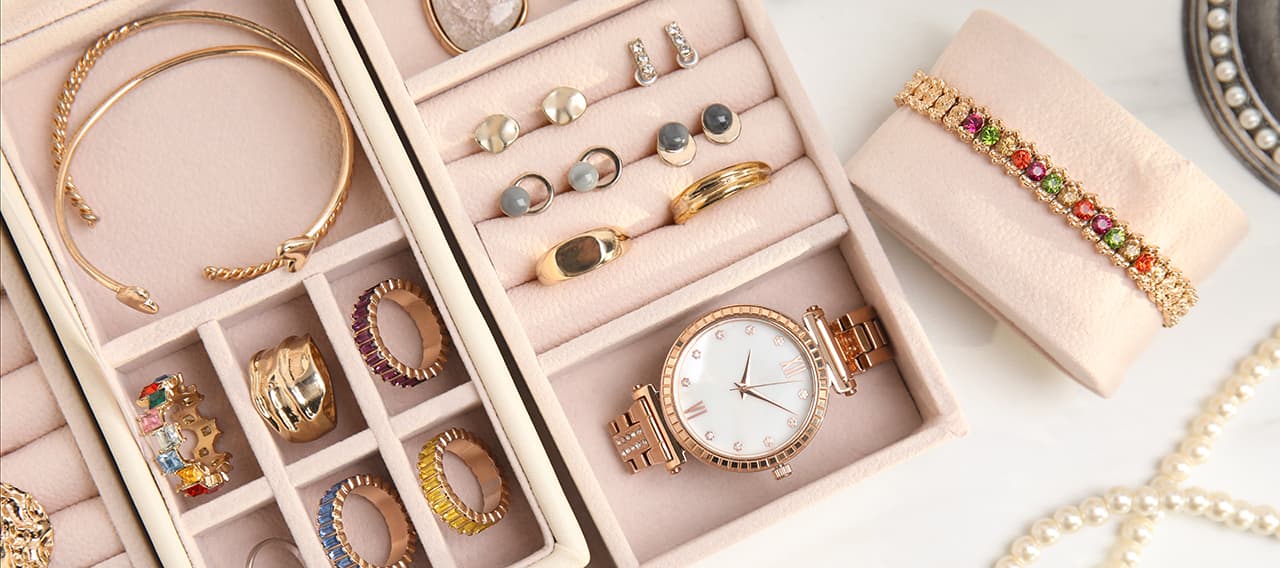While you may not want to think about a prized possession being stolen, damaged or lost, in reality these things happen all too often. Whether you own fine art, jewellery, antiques or even classic cars, having a current appraisal is an important part of owning valuable items.
As a statement of an item’s value, an appraisal provides the necessary documentation to substantiate the existence, condition, and value of your collection. It can be used when you want to sell or donate a collectible item or to help settle an estate. It can also help you make sure your valuable items are insured to their current replacement value, which provides protection against market fluctuations and value loss.
You may be surprised to learn that the value of an item can be measured in more than one way. When you commission an appraisal for your art and collectibles, the valuation methodology to be used will depend on the purpose of the appraisal. Two of the most common values for art and collectibles are Fair Market Value (FMV) and Replacement Value (RV).
- Fair Market Value is the price at which property would change hands between a willing buyer and a willing seller, if neither felt like they had to buy or to sell and both have reasonable knowledge of relevant facts.1 This value is often used for CRA appraisals or if you want to sell the item.
- Replacement Value is most often used for insurance on fine arts and collectibles. It is the value of an object, and the amount that would be required if you needed to replace the item with another of similar age, quality, origin, appearance, provenance, and condition within a reasonable length of time, in an appropriate and relevant market.2 Replacement value assumes that, in the event of a loss to personally owned fine arts or collectibles, the owner would like to replace the item as quickly as possible. This means that often an item would need to be replaced in a retail setting instead of in a secondary market such as an auction. It also accounts for fees, taxes and services such as framing. Because of these other factors, replacement value is higher than fair market value.
Appraisals should comply with the Uniform Standards of Professional Appraisal Practice (USPAP), which are the widely recognized standards for appraisers. A comprehensive appraisal report includes:
- Client name and address
- Appraiser’s contact information and qualifications
- Purpose of the appraisal (insurance, estate, etc.)
- Method of valuation (market comparison, cost approach, etc.) and the market in which valuation is applied
- Type of valuation and its definition
- Relevant dates including date of inspection, appraisal and report issuance
- Assumptions, disclaimers, and limiting conditions
- Thorough description of objects including artist, origin, style, media, marks, signatures, measurements, age, condition, and provenance
- Firm statement of value (not a valuation range)
- Valuation support including comparable examples, market analysis, and sources
In addition, the appraisal document should be printed, not handwritten, and should always be signed by the appraiser.
A qualified appraiser has a formal education in appraisal theory, methodology, principles, and ethics. He or she should also have specialized expertise in the material being appraised. For example, an appraiser who specializes in contemporary art may not be the best choice to appraise an Impressionist painting.
There is no government regulation of appraisers. Therefore, the best way to find a qualified appraiser is through one of the major accredited appraisal organizations — the Appraisers Association of America, the American Society of Appraisers, and the International Society of Appraisers. To obtain and maintain membership in these organizations, appraisers must complete courses and exams, and demonstrate years of experience. Additionally, members must strictly adhere to set ethical standards as outlined by USPAP.
Chubb can also provide a referral to a vetted appraiser — contact your Underwriter to request a referral.
While you may not want to think about a prized possession being stolen, damaged or lost, in reality these things happen all too often. Whether you own fine art, jewelry, antiques or even classic cars, having a current appraisal is an important part of owning valuable items.
As a statement of an item’s value, an appraisal provides the necessary documentation to substantiate the existence, condition, and value of your collection. It can be used when you want to sell or donate a collectible item or to help settle an estate. It can also help you make sure your valuable items are insured to their current replacement value, which provides protection against market fluctuations and value loss.
Fair Market Value vs. Retail Replacement Value
You may be surprised to learn that the value of an item can be measured in more than one way. When you commission an appraisal for your art and collectibles, the valuation methodology to be used will depend on the purpose of the appraisal. Two of the most common values for art and collectibles are Fair Market Value (FMV) and Replacement Value (RV).
- Fair Market Value is the price at which property would change hands between a willing buyer and a willing seller, if neither felt like they had to buy or to sell and both have reasonable knowledge of relevant facts.1 This value is often used for IRS appraisals or if you want to sell the item.
- Replacement Value is most often used for insurance on fine arts and collectibles. It is the value of an object, and the amount that would be required if you needed to replace the item with another of similar age, quality, origin, appearance, provenance, and condition within a reasonable length of time, in an appropriate and relevant market.2 Replacement value assumes that, in the event of a loss to personally owned fine arts or collectibles, the owner would like to replace the item as quickly as possible. This means that often an item would need to be replaced in a retail setting instead of in a secondary market such as an auction. It also accounts for fees, taxes and services such as framing. Because of these other factors, replacement value is higher than fair market value.
What to look for in an appraisal
Appraisals should comply with the Uniform Standards of Professional Appraisal Practice (USPAP), which are the Congressionally-authorized and widely recognized standards for appraisers. A comprehensive appraisal report includes:
- Client name and address
- Appraiser’s contact information and qualifications
- Purpose of the appraisal (insurance, estate, etc.)
- Method of valuation (market comparison, cost approach, etc.) and the market in which valuation is applied
- Type of valuation and its definition
- Relevant dates including date of inspection, appraisal and report issuance
- Assumptions, disclaimers, and limiting conditions
- Thorough description of objects including artist, origin, style, media, marks, signatures, measurements, age, condition, and provenance
- Firm statement of value (not a valuation range)
- Valuation support including comparable examples, market analysis, and sources
In addition, the appraisal document should be printed, not handwritten, and should always be signed by the appraiser.
Choosing an appraiser
A qualified appraiser has a formal education in appraisal theory, methodology, principles, and ethics. He or she should also have specialized expertise in the material being appraised. For example, an appraiser who specializes in contemporary art may not be the best choice to appraise an Impressionist painting.
There is no government regulation of appraisers. Therefore, the best way to find a qualified appraiser is through one of the major accredited appraisal organizations — the Appraisers Association of America, the American Society of Appraisers, and the International Society of Appraisers. To obtain and maintain membership in these organizations, appraisers must complete courses and exams, and demonstrate years of experience. Additionally, members must strictly adhere to set ethical standards as outlined by USPAP.
Chubb can also provide a referral to a vetted appraiser — log in to the client portal and select “Benefits and Offers” to search for a Preferred Service Provider, or call 877-60CHUBB to request a referral.
Innovation over the last decade has broken down geographic borders and brought the world closer together.
At the same time, COVID-19 has accelerated the need for businesses to be more agile and flexible; to rethink traditional, single-location-based operations; and to adopt remote working arrangements as the norm. As a result, companies have an opportunity to collaborate with partners big and small from locations across the globe. And as customers increasingly shop and interact online, those businesses that take steps to broaden their reach may find themselves in a stronger position.
Expanding into new markets with digital technology
There are countless third-party eCommerce platforms available to small and medium-sized businesses, which they can use to sell and promote their products in new markets without having to develop new supply and sales chains.1
Shopify, Magento, and BigCommerce are some examples of easy-to-customise frameworks that small and mid-sized businesses are using to develop a selling experience that’s simple, seamless, and completely digital. And at the top of the tree, Amazon offers selling plans that can be tailored to the needs of single-person operations as well as Fortune 500 companies — allowing both to reach an audience of millions.
Tailored shopfronts, rapid go-to-market times, and instant customer insights are all possible with the right platform. And the ability to easily create custom websites on the fly with platforms like Wix or Squarespace means that service providers can also deliver bespoke experiences.
In service of this borderless way of working is a roster of supplemental service providers that have brought traditional business processes into the 21st Century. Zoom, Microsoft Teams, and WebEx are now familiar presences in every office. And flexible workplace policies, collaborative file-sharing platforms like Dropbox or WeTransfer, and countless other solutions are at businesses’ fingertips, allowing them to operate in a similar way to traditional multinationals, but without breaking the bank.

A partner for protected growth
Prior to COVID-19, expansion into non-domestic markets was cited as a priority by just 13% of the respondents to Chubb and Accenture’s survey of small and mid-sized businesses, even though 78% agreed that their growth would be affected by changes to international trade.
Today, new technologies and an increased appetite for remote relationships can give businesses the perfect platform to unlock new opportunities. But this doesn’t come without risk.
Businesses need to make sure they consider the specific needs of their organisation and find a provider that ticks all the right boxes in terms of functionality, reliability, and security, while also having the proven track record to back it up. Additional training to make sure staff know how to use these platforms is also essential, to keep operations just as smooth as they’d be in a physical office.
Finally, if things do break down somewhere along the supply chain, an insurer with global reach can give businesses the support and protection they need as they pursue new opportunities.
Insights and expertise



This document is advisory in nature and is offered as a resource to be used together with your professional insurance advisors in maintaining a loss prevention program. It is an overview only, and is not intended as a substitute for consultation with your insurance broker, or for legal, engineering or other professional advice.
Chubb is the marketing name used to refer to subsidiaries of Chubb Limited providing insurance and related services. For a list of these subsidiaries, please visit our website at www.chubb.com. Insurance provided by Chubb Insurance Company of Canada or Chubb Life Insurance Company of Canada (collectively, “Chubb Canada”). All products may not be available in all provinces or territories. This communication contains product summaries only. Coverage is subject to the language of the policies as actually issued.







